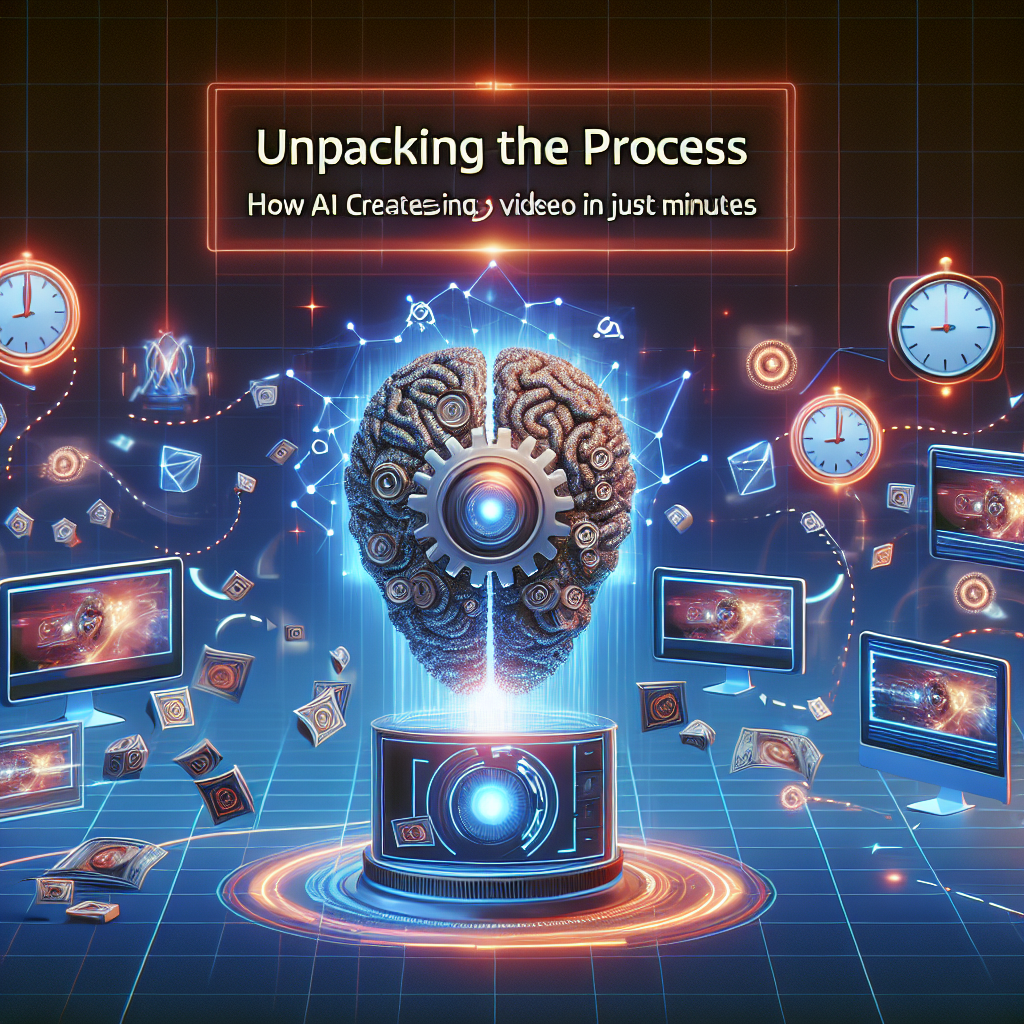In the rapidly evolving digital world, producing captivating video content is crucial for businesses, marketers, and content creators. However, the conventional video production method can often be time-intensive and expensive. This is where artificial intelligence (AI) steps in as a revolutionary tool in video creation, allowing users to craft engaging videos in just minutes. This article delves into the workings of AI-generated videos, the technologies behind them, and the advantages they provide.
Exploring the AI Video Generation Workflow
The AI video generation workflow comprises several crucial stages, each utilizing advanced technologies to simplify content creation.
1. Script and Storyboard Development
A compelling video starts with a thoughtfully crafted script. AI tools can sift through extensive text data to create scripts tailored to user-defined criteria like topic, tone, and style. Some sophisticated AI systems can even outline storyboards, offering suggestions for scene placements and visual styles, which help visualize the final outcome.
2. Voiceover Creation
After finalizing the script, AI-driven text-to-speech (TTS) technologies can produce realistic voiceovers. These systems leverage deep learning algorithms to replicate natural human speech, offering a range of voices and accents suited to the video’s target audience. This feature not only saves valuable time but also eliminates the need for voice actors.
3. Visual Content Acquisition
The next phase involves sourcing visuals to complement the script. AI tools can automatically retrieve stock footage, images, and clips from extensive databases, ensuring that the visuals align with the video’s tone and message. Some AI applications even provide tools for creating custom animations or graphics, enhancing the visual experience further.
4. Video Editing
AI streamlines the editing phase by automatically organizing the script, visuals, and audio according to a pre-established template or style. Advanced AI editing tools can even recommend cuts, transitions, and effects that match the video’s rhythm and pacing, enabling editors to produce professional-quality videos without requiring advanced editing skills.
5. Music and Sound Design
Background music and sound effects are vital for engaging viewers. AI can evaluate the video’s mood and theme to recommend suitable music tracks or generate original compositions. Furthermore, AI tools can automatically level audio tracks to guarantee optimal sound quality throughout all elements of the video.
6. Finalization and Rendering
Once all elements are assembled, the final step is rendering the video. AI systems can optimize rendering settings based on the intended platform (e.g., Instagram, YouTube) to ensure the highest possible quality. This process, traditionally taking hours, can often be completed in minutes with AI assistance.
Technologies Behind AI Video Generation
The success of AI in video generation is rooted in several core technologies:
- Natural Language Processing (NLP): Essential for understanding and generating human-like text.
- Machine Learning (ML): Trains algorithms using large datasets to learn from examples, enhancing accuracy over time.
- Deep Learning: Bolsters capabilities in speech synthesis, image recognition, and video editing through neural networks.
- Computer Vision: Empowers AI to analyze and interpret visual content for improved editing and suggestions.
Advantages of AI-Generated Videos
The benefits of utilizing AI for video generation are extensive:
- Speed: Create videos within minutes instead of days or weeks.
- Cost-Effectiveness: Lowers expenses associated with hiring various professionals for scripting, voiceovers, and editing.
- Accessibility: Enables even those lacking technical skills to produce high-quality videos.
- Customization: Easily modify elements like tone, style, and visual assets to cater to diverse audiences.
- Consistency: Ensures uniform quality across multiple videos, which is essential for branding.
Conclusion
AI-driven video generation marks a significant advancement in content creation and consumption. By breaking down the intricate video production process into manageable steps, AI allows businesses and creators to focus more on storytelling and less on logistical hurdles. As technology continues to evolve, we can anticipate even more innovative solutions that will reshape the digital landscape of video production. Whether you’re a marketer, educator, or entrepreneur, leveraging AI’s capabilities might be the key to unlocking your video content potential.

